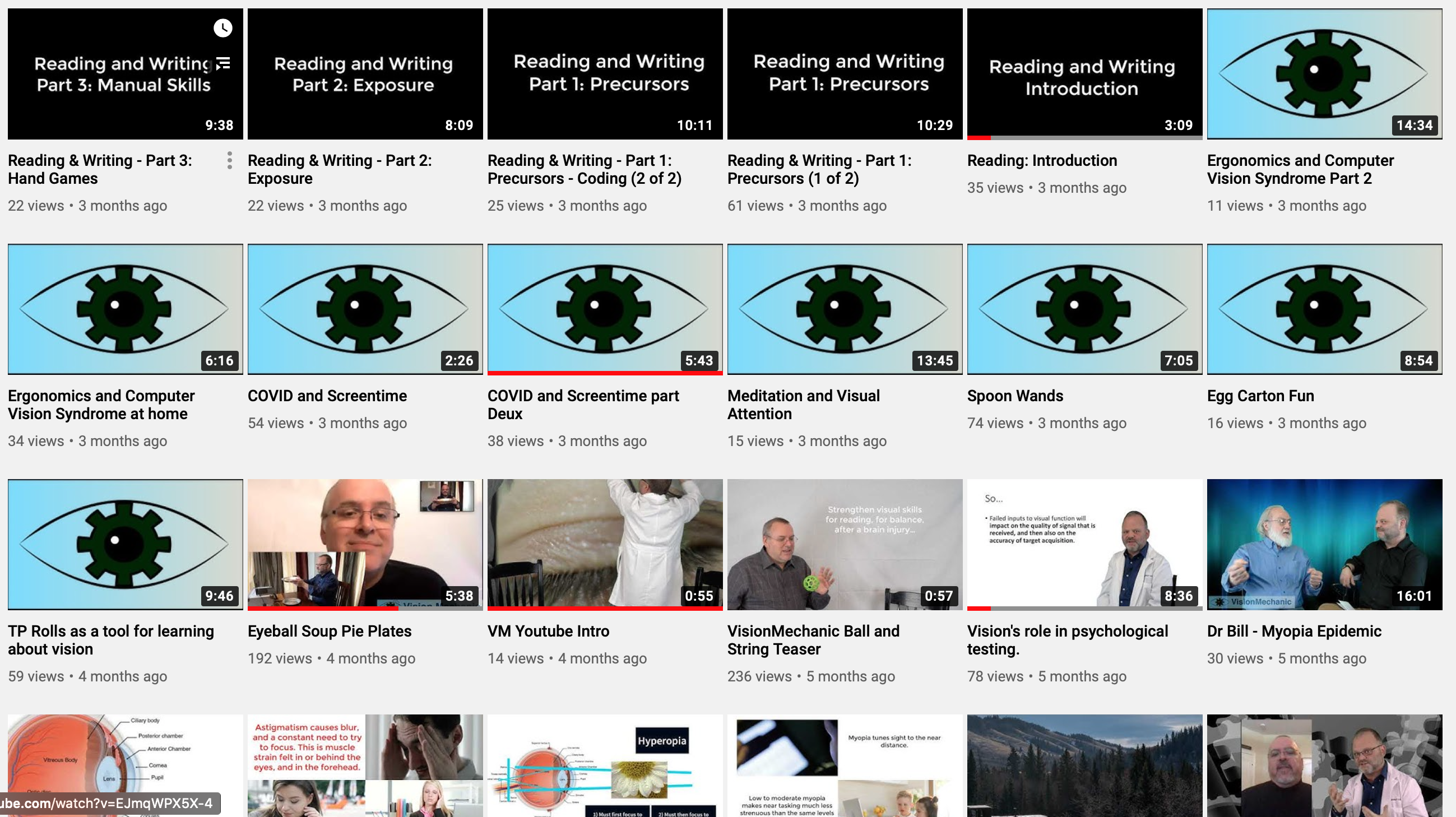(The goal of VisionMechanic.net is to provide science-based clinically relevant resources about humans, for humans. All humans. This series highlighting International Vision and Learning Month (August) is more focused on those humans who are in formal learning programs, most notably, younger humans. If you yourself are a learner, or if you teach them, guide them, care for them or provide therapy for them, then this series will be of interest to you.)
In 2007, the Government of Alberta introduced mandatory seatbelt laws. This was not openly received by everyone. Nowadays, it seems a critical error in judgement to allow children, or indeed anyone, to take a high speed ride in a sea of 2 tonne vehicles without some sort of restraint to prevent unneeded death and injury. Most people avoid accidents during the day, the law is designed to protect against unforeseen cases, and to protect children who stand to lose the most over a lifetime.
Most people avoid accidents during the day, the law is designed to protect against unforeseen cases, and to protect children who stand to lose the most over a lifetime.
Applying the same logic to the way we manage early childhood education would also go a great distance to reduce healthcare and education costs. The benefits to the economy, and to individual and public health, of mandating vision assessments for children are greater even than those of seatbelt laws.
It doesn’t take a vision scientist to recognize that if a person is affected by visual impediments, much of life can be out of reach, from education to work opportunities. It is not so widely known or obvious that visual difficulties can also often lead to some common medical concerns, like headache, dizziness, double vision, and a variety of child behaviour concerns.
Alberta currently has no requirement for mandatory vision exams for children, and yet we all pay the price for ignoring the problem. Vision concerns are often attributed to underprivileged people in far-off lands, that is, people without access to essential care. The fact is, from 1/6 to 1/3 of children in our own community schools are seriously affected by visual impediments. Ironically, our success in managing these concerns is similar to success in the third world, especially so, I’ve found, on First Nations reserves.
What Happens When You Check All Children? The Kentucky Experience
In 2000, the Kentucky preschool exam law, House Bill 706, was enacted to address high rates of vision problems severely limiting young Kentuckians’ ability to learn and succeed in school. One goal of the law was to ensure children had no significant physical or sensory impediments that would prevent them from succeeding. The bill’s proponents recognized that not only do many children struggle with easily corrected obstacles to learning, but that some populations, such as Native Americans and Hispanics, are much more disadvantaged this way than other ethnicities.
HB706 requires schools officials to secure evidence that a comprehensive eye exam has been performed by an optometrist or ophthalmologist prior to Jan. 1 of the first year a child turning 3, 4, or 5 years old is enrolled in a public school or Head Start program. The goal is to ALL children are ready for education, and that no child will suffer the long term effects of uncorrected visual impediments. In general, children from more informed and affluent homes are more likely to undergo vision assessment, and this leads to losses in opportunity for those affected but never tested. These unchecked visual impediments alone, it is said, account for billions in lost productivity and unneeded healthcare costs in the US every year. Differences in economic, social, and education achievement between ethnicities is also magnified by the relative differences in rates of visual impediments between them. (To be covered in an upcoming article.)
Analysis of the first seven years of data from Kentucky reveals that, as expected, a great number of children were identified as having significant visual impediments that had not otherwise been corrected. Correcting vision in the highest risk cases alone meant:
- The number of Kentucky children proficient or distinguished in core scholastic success measures showed significant improvement only a few years after the preschool exam law was implemented.
- Children proficient or distinguished in reading rose from 57 percent in 2000 to 68 percent in 2005.
- Students proficient or distinguished in science rose from 36 percent in 2000 to 55 percent in 2005.
- Students proficient or distinguished in writing rose from 23 percent in 2000 to 53 percent in 2005.
Alberta Does Not Mandate Vision Assessment, and Loses
The statistics in Kentucky’s experience do not reflect the increases in productivity from the treated children over their lifetime, nor do they describe the savings to health and education authorities due to prevention of apparent learning and health concerns caused by difficult vision. It is also true that proper vision management can improve performance in children who are otherwise fine: They know how to play hockey, they just have to ‘play with dull skates’.
In Alberta, few schools have the training or direction to properly manage children’s vision needs prior to subjecting them to years of intensive book learning. For some children, this neglect amounts to abuse.
In Alberta, few schools have the training or direction to properly manage children’s vision needs prior to subjecting them to years of intensive book learning. For many children affected by visual impediments, this neglect amounts to abuse – though it is hard to define who is responsible, and it is likely not important. It is a parent’s responsibility to ensure they are aware of any vision needs the child might have and this requires they see a professional for assessment. The schools for their part have an important role to play in ensuring high capture rates for vision exams, and to facilitate the process.
Sadly, most schools in Alberta and across Canada are oblivious to the need, so it is really the Wild West, or a crap shoot, as to whether an affected child succeeds or not. Children are, effectively, learning without seatbelts.
All Children Must Be Checked – Especially In Light of COVID-19
Alberta came close to achieving the same common-sense approach to child development as Kentucky (and other jurisdictions, see also here) through near adoption of Bill 203 in 2014, something I am proud to have fought for. This Bill passed second reading unanimously, then was forgotten when government changed over. It seems child health issues were of secondary concern for the governments that followed.
Now, with a headlong rush to change how we deliver education to a much more computer-centric model (more than a child-centric one), more an more problems will rise to the surface in a more obvious way. Visual disturbances that impact on learning and behaviour are much more likely to be encountered when the visual tasking is overloaded, such as with greater and extended amounts of near-distance digital presentation of text.
Healthcare provides essential and advanced vision assessment service through optometry and ophthalmology, but since there is no mandate for exams, only about 15% of children are ever checked before it’s too late. It is not good enough to avoid comprehensive testing saying ‘this kid doesn’t appear to have a problem with vision’ or ‘vision is not contributing to the problem’. In fact, ignoring vision is logically and properly categorized as child neglect, even abuse in some cases.
It is not good enough to avoid comprehensive testing saying ‘this kid doesn’t appear to have a problem with vision’ or ‘vision is not contributing to the problem’. In fact, ignoring vision is logically and properly categorized as child neglect, even abuse in some cases.
Opinions vary on this issue, but those who work in child development, such as optometrists, vision science researchers, ophthalmologists, occupational therapists, and a growing number of teachers and psychologists, recognize the the clinical facts. Some feel this is a political issue where costs to healthcare and business interests are at play. Meanwhile, for clinicians, it is clear that children who are affected by visual impediments will struggle needlessly for years and cause extra burden to public services. For taxpayers, it is a simple matter of proper resource management and cost reduction through prevention (an exam and a pair of glasses is cheaper than and MRI scanner when looking for the reason a child gets headaches and can’t read.) As Canadians, we must remember that when a child is denied strong vision for learning, he is denied a lifetime of freedom, productivity, and self-sufficiency: We are denying his rights according to the Canadian Charter of Rights and Freedoms.
The day is coming when teachers, family doctors, and psychologists will have at least some notion of a child’s vision needs as a basic piece of information necessary for managing their care, similar to knowing their age and gender. Vision is invisible. You have to look for it, like blood pressure or heart rate. Currently, most professional programs in child development, including pediatrics, psychology, and education include little to no practical training in the nature of child vision, and it matters. All children must be checked; not doing so is negligent – towards the child, but also regarding the provincial and national economies.
When taking your children to school, make sure they are secured by a seatbelt, and make sure you know what their vision needs are, if any. Child vision exams are covered by the Province.
Ignoring vision needs of young learners costs us all, but the greater cost is borne by the child over a lifetime – and these costs are incalculable. Still, the Kentucky example does provide us with a clear view of some of the many benefits to education that follow from ensuring basic learner needs, such as easy and accurate vision.
Expand your understanding:
- Get a head start by having a look at other posts here at visionmechanic.net, or on the Vision Mechanic YouTube channel.
- Learn more in a more formal way, consider taking one of the growing number of professional credit VisionMechanic.net courses for developmental professionals (teachers, doctors, therapists, psychologists).
- Join the Vision Rehabilitation Group on FaceBook.







